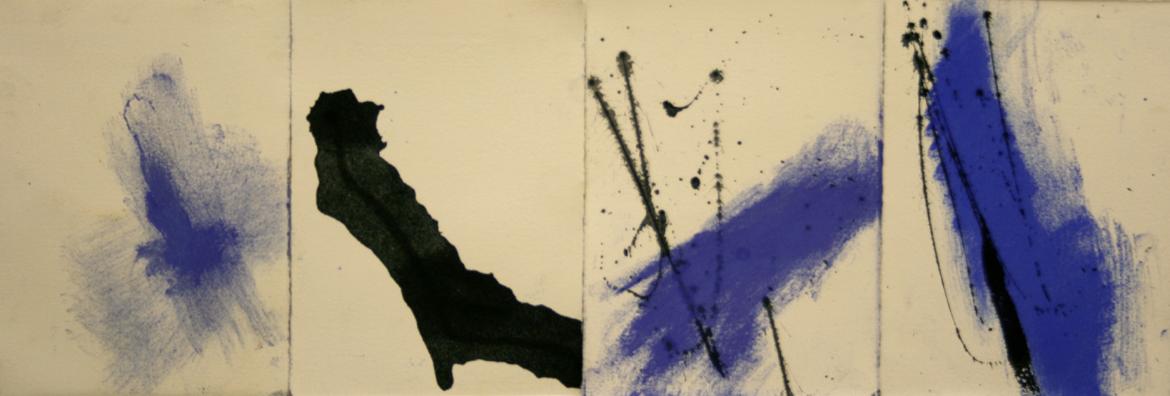My Abstract Thinking and the Way it Works
Music has always been an interest of mine and for some time I have been looking for a way of incorporating musical ideas and structures into my paintings. It occurred to me following a commission to make a long painting (8 x 2 feet) of the coastline between Holy island and Bamburgh, that an elongated format introduced a different way of looking at a painting. The eye in travelling along the length of the image was becoming involved in a journey, a journey through time. This was an idea explored by the Chinese in their ancient scroll paintings which could not be seen all at once but had to be unwound a section at a time so that the image appeared as a slowly revealed narrative taking its audience on a visual journey.

In a well structured painting the eye roves continually around and through the picture plane making pictorial associations, and in that sense every painting should in part be a visual journey whether rectangular or long. Music however moves relentlessly forward and although it may refer back upon itself its journey takes place in real time, proceeding from episode to episode. The only approximate way I could find to replicate this in a two dimensional artwork was to break up the image into a sequence of separate images and try to arrange the individual parts in such a way that the eye would be led from left to right or right to left. While a certain number of those marks lead in one direction it is then possible, like in musical counterpoint, to have another group of similar marks making another argument that is trying to either complement or contradict the first statement. It might be a sequence of lines leaning in one direction and another group leaning the other way. They form two opposing patterns in the minds eye. In the Sequences series they are randomly made marks carefully organised to show some visual purpose and find an unspoken logic in the way one follows another.

That is my agenda for the moment. There are all sorts of correlations with music not least in the expression of rhythm through patterns of numbers. I have no profound theory about this but I am looking at balance and unbalance in the way the figuration is arranged.
The eye puts together like with like, similar colours seek each other out, close tones, comparable shapes – they all carry the eye across the painting, they read each other like letters on a page and their dialogue expresses the intent of the image. In that regard there is no separation between my landscape work and abstract work because they both work in the same way. Out of that visual conversation the structure of the work and its meaning forms itself.